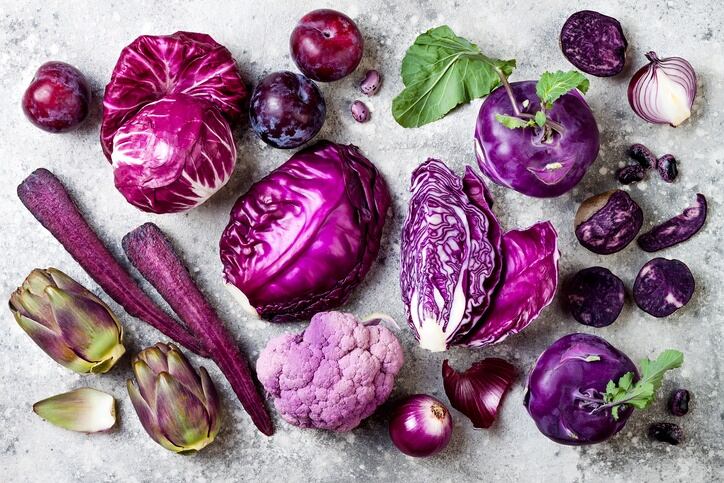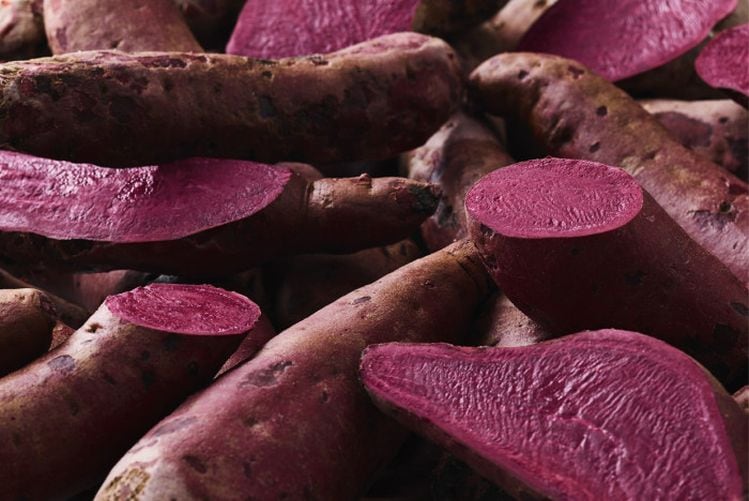“Our mission is to improve human health by providing high quality substitutes for the synthetic food colorants used today,” some of which, such as Red #40 and Yellow #5, are associated with negative effects on human health or are banned in select countries, said the company Co-founder and CEO Halim Jubran.
Despite these risks and pushback from consumers, 45% of the $2.7 billion food colorant market is made up of synthetic options, in large part because the currently available natural colorants functionally cannot meet market demands or are not cost effective, he said.
“There are many natural colors on the market, but still there is a need … for good natural colorants and substitutes for synthetic ones with respect to cost effectiveness, function … stability and range of colors. Actually, there is no single product that can answer all of these challenges – at least not like the synthetic ones, which are much better and cheaper,” he said.
Could betalains hold the key?
However, Jubran said, Phytolon could soon offer a solution that checks all of these boxes.
“We offer betalains, which are pigments that are found in plants – I like to say they are responsible for coloring some of the most beautiful plants in nature. And they have a very, very high potential for being a leader in natural food colorants,” he said, explaining: “First, they are healthy, they are natural, of course, they provide a wide range of colors … from dark purple to yellow. … They are water soluble and stable, at least compared to other natural food colorants, and this makes them available for a wide range of food products.”
Some betalains – from beets – already are on the market today, but as an extract, which is a different, less efficient method of developing a colorant than the process that Phytolon uses, Jubran said.
“Under the current methods, you don’t extract the whole amount. So you are left with only 1-2% of the active component of the color, so the product is actually dirty, it tastes like beets and you don’t want it in every format,” he explained.
Other challenges with existing betalains from beets on the market today is they are low in color concentration, have a limited color range and come from a inconsistent raw material.
Phytolon tackles each of these problems with an exclusively licensed technology that yields pure betalains via fermentation from the plant genes responsible for colors that only recently were discovered a few years ago, Jubran said.
“Our process is very simple, but the [previous] limitation was that the genes were not known … until three or four years ago when they were discovered in the Weizmann Institute [in Israel] by a leading researcher in the field of metabolomics,” Jubran said.
How Phytolon’s technology works
Like the researcher who discovered the genes, Phytolon uses yeast to express the betalains, said Jubran, adding that Phytolon has an exclusive licensing agreement to use these genes and the technology to make natural colorants for commercial purposes.
“The exciting thing here, and this is why I wanted to join the project, is the yeast used to produce betalains produces pure betalains – it doesn’t contain yeast,” he said.
He explained: “Usually, when a cell produces a component, the cell tries to keep this component, but the yeast cells here actually secrete the betalains, like we sweat, and this is very important for the technology because it makes everything cheaper and more reliable. You don’t need to extract the betalains from the yeast because the yeast is not part of the product.”
As such, he added, the yeast can easily be separated from the pure betalains through centrifugation.
The ability to easily separate the yeast from the finished betalains also means that even though genetic engineering is part of the manufacturing process, there are no genetically modified organisms in the finished product, Jubran said.
In addition, he noted, the threshold for labeling a product as containing a GMO is more than 0.9% of the finished product and food colorants never reach that level.
Finally, he notes, that the process of using Baker’s Yeast to produce the colorants is “nothing new or dangerous, so yes there is a stage of [genetic engineering] in our process, but it is not relevant to the final product.”
Several years until mass production is possible
While the technology holds significant potential, Phytolon is still several years away from scaling production to the level necessary to support the market.
Jubran explained the company currently is still producing color variants and optimizing the system to make it more cost effective to produce as much as possible. But, he said, the company hopes to scale-up procedures in 2019 and begin checking off the necessary regulatory requirements to market the technology and subsequent colorants in 2020.
By 2021, Jubran said, the company is aiming to have strategic partnerships that will allow it to sell and market its colorants. Ideally, he added, the company will first target the US, which is the largest market for the product, but he said he sees potential worldwide because “everyone eats first with their eyes.”




